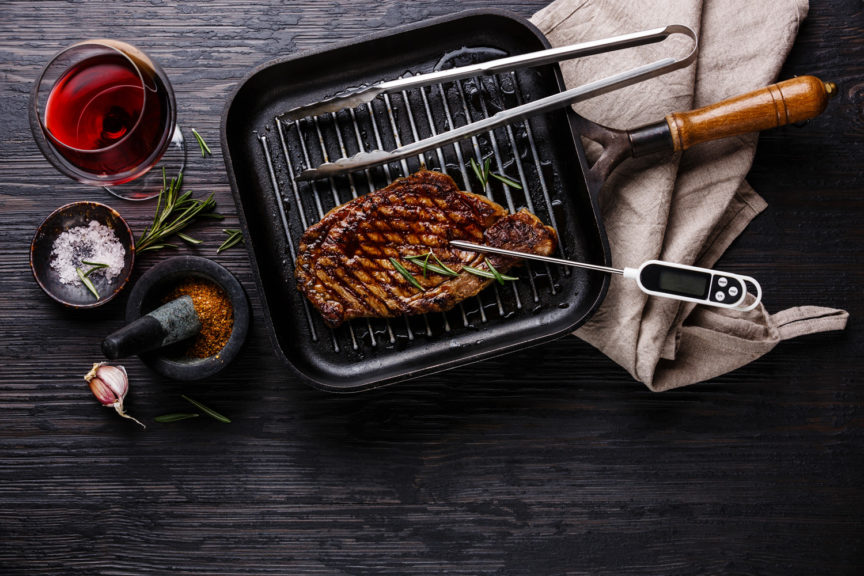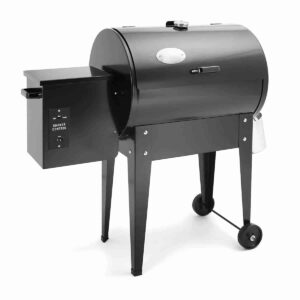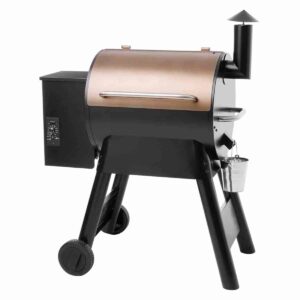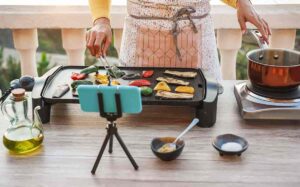Meat thermometers are very important in cooking, whether you are making a Thanksgiving turkey or having a backyard BBQ party in the summer. They help you to understand when you have achieved the right temperature for safe eating when you are finished cooking.
How do you use a meat thermometer for accurate temps?
- In order to get the most accurate temperatures with a meat thermometer, you will need to first make sure that it is properly calibrated and that there are no issues with the measurements.
- Once this is done, you will need to stick the needle into the thickest part of the meat.
- To be more specific, this should extend about 2 to 2 and a half inches into this area. Wait about 15-20 seconds before you read the temperature on the thermometer for the most accurate results.
- Finally, you should avoid keeping the thermometer in the meat while it is cooking, in order to make sure that it does not get thrown off by the heat.
When it comes to cooking any kind of meat, it is vital to make sure that you are doing so thoroughly. Raw meat is a dangerous hazard if ingested at all, and is something that you should avoid at all costs.
In order to stay away from serving raw or undercooked meats, you can make use of a meat thermometer that will tell you exactly where you are in the cooking process. Keep reading to find out how you can use this tool correctly for the most accurate temperatures before you present your guests with their plates.
How To Use a Meat Thermometer For Accurate Temps
There are plenty of different scenarios in the kitchen where you might be using a meat thermometer. This mostly applies to tasks where you are cooking for a large group of guests, which will also require much thicker cuts of meat that you might not eat every day.
When you are grilling a small chicken breast for dinner, it is much easier to be able to tell when it is done, because you can physically see it cooking from the outside in. However, when you are serving up a big ham for a party of 20 guests, this won’t be as easy of a task.
This is due to the fact that you can’t see from the outside if such a big chunk of meat is cooked or completely raw in the middle, and you don’t want to cut into it too early or you might lose all of the flavor and ruin your dinner.
As q quick and easy solution to this problem, you can use your handy meat thermometer. Meat thermometers usually look like a long thick metal needle, with a point on the end for easy entrance into the targeted meat.
In order to use one of these, you will place the sharp portion directly into the middle part of the meat, and look at the temperature gauge on the top that will be facing you when you insert it.
Using a meat thermometer alone does not necessarily mean that you are cooking the meat correctly. You will need to know exactly how to use the thermometer as well as how to read it in order to really make sure that your food is done. Otherwise, there will be no point in using it at all.
In this section, we will be going over how you can get the most accurate temperature with your meat thermometer.
How To Get The Most Accurate Meat Thermometer Temperatures:
- Make sure your thermometer is accurately calibrated before you start
- Place the thermometer into the thickest part of the meat (about 2-21/2 inches)
- Wait 15-20 seconds after you insert the needle to read the temperature
- Don’t leave the thermometer in while the meat is still cooking
The first thing that you will need to do before you can start measuring the temperature of your meat is to make sure that your thermometer is accurately calibrated. This is very important, because you can’t expect to get a correct measurement out of a tool that is broken or off by a few numbers.
This can not only be inconvenient but also very dangerous to the people who will be eating the food, so this step should not be skipped by any means.
Once you have confirmed that your meat thermometer is in working condition and ready to go, you will proceed to place the thermometer into the thickest part of the meat. This does not necessarily mean the very center, but it could very well be if that is also the thickest section.
This is vital, because the thickest part of the meat is the place that will cook through to the middle slower than the other areas. If you make the mistake of measuring a thin part, you might be fooled to think that the entire thing is done, when the majority of the piece of meat is still raw or undercooked.
Wait 15-20 seconds after you insert the needle to read the temperature, in order to make sure that you are giving the thermometer enough time to accurately get the results together. If you are too prompt with this step, you could be missing out on the correct information.
Finally, don’t leave the meat thermometer in while the meat is still cooking. This is really important to keep in mind, because it can throw off the results due to the heat source all around it.
For instance, if you are cooking a piece of steak on the grill and you leave the meat thermometer inside of it and walk away, the heat from the fire of your grill will be directed toward the meat thermometer.
Since the needle of the thermometer will be made of conductive metal, it will pick up the heat from the source of fire instead of the actual meat, and remain hotter than normal. This can lead you to retrieving incorrect results from your thermometer and possibly serving unsafe food, which is something to avoid all together.
The Ideal Temperatures For Each Type Of Meat
When you are measuring your meat with a thermometer in order to find the correct cooking temperature, it is important that you know exactly which temperatures your food should be reaching for optimal safety.
While it is true that you can follow the instructions in the previous section to use the meat thermometer, you will not be able to guarantee any kind of safety to your guests if you have no idea what you are even looking at.
In this section, we will clear everything up in regards to the ideal temperatures for each general type of meat. Take a look at the list down below to find these numbers, keeping in mind that it should be the minimum temperature for each cut.
The Ideal Temperatures For Each Type Of Meat:
- Poultry/white meat 150 degrees F
- Dark meat 165 degrees F
- Red meat (rare) 120 degrees F
- Red meat (medium) 140 degrees F
- Red meat (well) 160 degrees F
- Pork 145 degrees F
When you are cooking any kind of poultry or similar white meat such as chicken or turkey, you will need to make sure that it reaches at least 150 degrees in the thickest part of the cut before you serve it.
Similarly, if you will be serving dark meat such as chicken wings or legs, you should wait until it gets up to 165 degrees before removing it from the heat source.
Red meat is different than poultry, because you are able to choose how well-done you would like It to be without it being unsafe. If you are looking for a rare steak, you should cook it to 120 degrees. Medium goes up to 140 degrees, and you can wait until it reaches 160 degrees for a well done piece of red meat.
Pork is an entirely different subject, and should never be undercooked at all under any circumstances. When you are cooking any kind of pork dish, stick to the rule of 145 degrees as a minimum.
Why Are Meat Temperatures and Thermometers Important?
Lastly, we will be discussing why meat temperatures and thermometers are important, or otherwise, why all of the information in this article really matters.
To get some insight on the topic, direct your eyes to the organized list down below. Then, keep reading to get the full scoop on why you should care about the temperature of meat and how you can measure it accurately.
This is why meat temperatures and thermometers are important:
- Meat must be cooked through fully to eliminate any bacteria
- Uncooked meat can cause sickness and disease
- Meat thermometers are the most accurate way to find out if meat is cooked all the way through (the poke test is not always completely accurate)
As you might have already guessed after reading this article, meat must be cooked through fully in order to eliminate any bacteria. If you eat or serve any kind of raw or undercooked meat, it can cause sickness and even serious disease to those who ingest it.
This is a very dire issue that can lead to food poisoning and conditions like salmonella if you are not careful.
Therefore, it is more important than ever to make sure that everything that comes out of your kitchen, when it comes to meat, is cooked carefully and thoroughly.
This is where the meat thermometer comes in. It is increasingly important because it is the most accurate way to find out if meat is cooked all the way through. The poke test and looking at it from the outside is not always the best way to accurately find out if your meat dish is safe to eat.
All in all, meat thermometers are a very vital component of any big gathering or just an everyday meal that you cook in your kitchen. Meat thermometers do not have to be limited to holiday meals and special occasions, they can be used daily to get the most accurate temperatures.
Using a meat thermometer is the most desirable option for deciding whether or not your meat is cooked all the way through. This takes precedence over any other method, and will provide you with the peace of mind that you have been thorough in completing your task.
With all of the tips in this article, you should be able to conveniently and accurately use a meat thermometer to tell the difference between a slice of meat that is cooked and one that needs to go for just a little bit longer.
Check out our Recent Posts
Z Grills Review
If you’re looking for a grill that will last, Z Grills is the way to go. Z grills are made of the best quality materials...
Read MorePit Boss Pellet Grill Review
Pit Boss is one of many when it comes to manufacturers of wood pellet grills and smokers. If you have spent any amount of time...
Read More10 Fun Benefits of Taking an Online Cooking Class
There’s never been a better time to take an online cooking class. With the continued popularity of online learning, there are more and more exciting...
Read More



